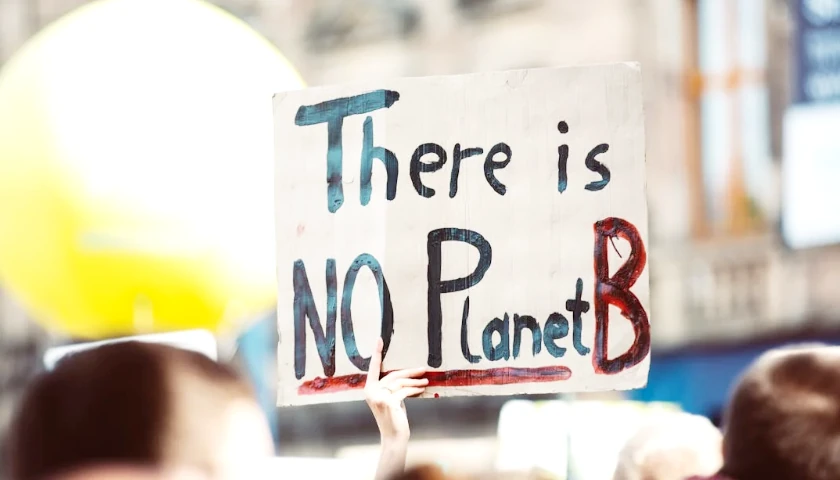by John Murawski
In 1986, an upstart public health researcher named Arline Geronimus challenged the conventional wisdom that condemned the alarming rise of inner-city teen pregnancies. While activist minister Jesse Jackson and health care leaders were decrying the crisis of “babies having babies” as a ghetto pathology, Geronimus contended that teenage pregnancy was a rational response to urban poverty where low-income black people have fewer healthy years before the onset of heart problems, diabetes, and other chronic conditions.
Although Geronimus’ claims gained little traction at the time, the concept she pioneered – “weathering” – eventually became a foundation for the social justice ideology that is now upending medicine and social policy. She has stated in interviews and in her writings that the term “weathering” was intended to evoke the idea of erosion and resilience.
A white professor at the University of Michigan whom The New York Times hailed last year as an “icon,” Geronimus has combined race theory with data and statistics to argue that the chronic stress of living in an oppressive, white-majority society causes damage at the cellular level and leads to obesity and other health conditions, resulting in shorter life expectancies for African Americans. In more than 130 published studies, she has expanded the weathering hypothesis from an explanation of poverty harming one’s health into a dystopian sociological worldview that identifies middle-class assimilation and professional striving within the “American Creed” of hard work as the silent killers of people of color.
“Living life according to the dominant social norms of personal responsibility and virtue is not universally health‑promoting,” Geronimus wrote in a Harvard Public Health essay last year. “On the contrary: if you’re Black, working hard and playing by the rules can be part of what kills you.”
The subject of hundreds of peer-reviewed studies and thousands of citations, the weathering hypothesis is now widely taught in public health schools and accepted as perhaps the most plausible scientific explanation of how American society grinds down black and brown bodies. And the weathering paradox – that “relatively young people can be biologically old” – is now influencing policy decisions at all levels of governance.
Geronimus’ hypothesis was the foundation of many of the policy decisions of the White House COVID-19 health equity task force. In New Hampshire, the governor’s COVID-19 Equity Response Team issued a report and recommendations in 2020, citing weathering (and “racial battle fatigue”) as documented and established realities of American life. Weathering was recently extended beyond American people of color and accepted as evidence in federal courts to win early release of non-white detainees, some as young as their 30s, who were deemed to be prematurely aged and therefore at higher risk for COVID complications.
Some critics are beginning to push back against what they see as the heavy-handed, COVID-era politicization of healthcare. Ian Kingsbury, research director at Do No Harm, a nonprofit that seeks to keep identity politics out of medicine, said the uncritical acceptance of the weathering hypothesis as factual science has created an aura of invincibility.
“Unfortunately, judges and other policymakers look to academic journals to be authoritative and trustworthy voices on what is evidence and what is science,” said Kingsbury. “And so you sneak this stuff in there and, unfortunately, as far as a lot of people are concerned, you’ve created knowledge.”
More broadly, Boston University public health dean Sandro Galea warned in a new book, “Within Reason: A Liberal Public Health for an Illiberal Time,” that his profession has veered into overcorrection and revolutionary excess. Galea doesn’t name names in his book, but he rebukes public health advocates for favoring political narratives over empirical data, denying the reality of social progress, and fixating on a utopian quest “to create a world free of risk.”
Geronimus did not respond to emails requesting an interview for this article.
The rise and reach of Geronimus’ weathering hypothesis – a once obscure and idiosyncratic idea that is becoming conventional wisdom in medicine – provides a window into how activist rhetoric and social justice ideology pioneered by feminist, queer, and critical race theorists are recasting healthcare as a Machiavellian power struggle between the privileged and the oppressed.
The public health field has long focused on “social determinants of health,” such as one’s environment and socioeconomic status, as contributors to health outcomes. The weathering hypothesis takes political empowerment to the next level, by medicalizing social relations and politicizing medicine. Weathering prefigured the recent flood of medical research that centers race in public policy and supplies the rationale for such moves as 265 public authorities declaring racism as a public health crisis; health officials jettisoning colorblindness and prioritizing people of color for COVID vaccinations and heart treatment; and medical schools training future doctors in social justice activism.
In her 2023 book, “Weathering: The Extraordinary Stress of Ordinary Life in an Unjust Society,” Geronimus sweeps across time and space, omnisciently diagnosing celebrities and public figures with weathering. She claims it explains why Martin Luther King Jr. had the damaged heart of a 60-year-old when he was assassinated at age 39 and why Fannie Lou Hamer died of breast cancer and complications of hypertension at age 59. She asserts that the trauma of being black in America is one reason why tennis greats Serena Williams had life-threatening blood clots at age 36, and why Arthur Ashe had a heart attack at age 36.
“Success comes at a spectacularly high health cost for those who have to fight the hardest to achieve it in the context of a society that doesn’t value them,” Geronimus stated in her book. “Structural violence is insidious, pervasive, and fateful. It is the fundamental cause of weathering, and it is entirely ignored in the age-washing narrative.”
It is amply documented that African Americans of all social classes have worse health outcomes, earlier onset of chronic diseases, and average life expectancies reported as five to six years less than whites. Weathering science, as Geronimus calls it, measures various biomarkers of what is presumed to be psychosocial stress – such as cortisol levels, telomere lengths, cytokine storms, and allostatic loads – to make the case that on average black adults are as much as 10 years older biologically than white people of a comparable chronological age.
But the data is complicated, requires interpretation, and doesn’t always add up. For example, in a 2021 study, a gerontology scholar at the University of Southern California assessed 13 measures of epigenetic aging. It found that some of the measures indicate accelerated aging among African Americans, while others indicate slower aging for African Americans. Epigenetics refers to the way genes function or malfunction under environmental stress and cultural conditions; most of these “epigenetic clocks” associate accelerated aging with obesity and lifetime smoking. This research, noting “the lack of expected effects of race and ethnicity,” suggests that there is no gold standard for measuring premature aging, and that weathering research is highly sensitive to the variables and measures that researchers select.
Nevertheless, Geronimus compares the African American experience of living and working among white people to the fight-or-flight adrenaline rush of a prehistoric human fleeing a cheetah – except, she says, that a 21st-century black person in a majority white society is trapped in that high-stress mode all day, every day, without reprieve, resulting in a flood of stress hormones that dysregulate the body.
Fluent in the language of social justice activism, Geronimus describes American society as a relentless onslaught of “microaggressions,” “othering,” “existential insults,” “daily indignities,” “voice erasure,” “identity threat” and other forms of “cultural oppression” that lead to early death. In response to those ever-present dangers in “the privileged space known as whiteness,” black people are constantly forced to adopt “high effort coping strategies” that Geronimus describes as “identity management” and “identity safety.” In a 2015 study titled “Black Lives Matter,” Geronimus and her co-authors estimated that racism and weathering caused 2.7 million “excess black deaths” in the United States between 1970 and 2004, a death toll of genocidal proportions.
This one-dimensional way of analyzing social relations has the effect of privileging the stress of those presumed to be oppressed, said Stanley Goldfarb, a professor emeritus at the University of Pennsylvania’s medical school and founder and chairman of the Do No Harm nonprofit.
“The problem with the theory is that these hormones and these stress responses don’t know what skin color you have,” Goldfarb said. “The point is: What’s unique about their stress? The point isn’t that stress is bad. The point is you decided that your stress is unique and different from everybody else’s stress.”
Still, weathering is an attractive explanation to researchers because the link between psychosocial stress and physical wear and tear is consistent with lower life expectancy for African Americans and lower-income people.
Moreover, the hypothesis is “very intuitive” to economists because of its similarity to modeling health depreciation, and to social scientists who seek explanations of differential outcomes, said economist Robert Kaestner, a University of Chicago public policy professor who co-authored a weathering study with Geronimus in 2009.
However, weathering studies do not actually measure stress or racism, but only correlate biological metrics back to the weathering hypothesis. The scientific conundrum is that the same biological evidence that supports weathering could also be “consistent with a lot of other things,” Kaestner said in a phone interview. “It’s always a measurement problem.”
“Weathering is a hypothesis, still in search of definitive evidence,” Kaestner said. “I’ve never seen one [study] – including my own – where it’s a definitive study that this really is a smoking gun that racism or prolonged psychosocial stress causes adverse health outcomes.”
Stress and racism are assumed as the causes of overeating, smoking and other unhealthy habits, in large part because the public health field and medical research steer clear of explanations that are genetic, biological, behavioral or cultural – which would violate the rule that prohibits blaming the victim.
“That the chronic cascade of stress hormones in the bloodstream may also physiologically propel us toward eating ‘comfort’ foods high in fats and sugars, or to turn to alcohol or other drugs for relief, only makes this problem all the worse,” Geronimus writes in her book.
This leaves only one permissible option: structural oppression. A reader of these studies will be struck by the absence of alternative explanations.
“They’re writing a story about weathering. I’m going to leave it at that,” Kaestner said. “It’s a widely held view that this is in fact what’s happening. There’s tons of these correlation studies that really don’t get anywhere near documenting a causal relationship, but if you write enough of them, it becomes conventional wisdom in the public health community.”
Still, the hypothesis can exert hypnotic powers on acolytes. Last year, during a burst of media fascination in Geronimus’s book, Britain’s Guardian newspaper reported that Geronimus “presents a staggering accumulation of evidence to show how daily discrimination grinds people down and all too often leads to debilitating illness and early death.”
Less than three weeks later, the Guardian ran another article about weathering, in which Geronimus convinced a black reporter that there’s no escape from the weathering trap without restructuring modern societies.
“By the end of our conversation I feel trapped – hyperaware of all the ways my social identity as a member of a black minority exposes me to stressors,” the Guardian writer ruminated. “Am I trapped?”
“I think there are things you can do that will make a difference, but you are stuck being weathered,” Geronimus responded. “And it really will take other kinds of structural changes for weathering not to happen.”
Geronimus asserts that the totalizing nature of white society renders conventional prescriptions for good health – diet and exercise – as naive and possibly dangerous.
“Exercise can be beneficial, but a Black person considering taking a run will be unlikely to forget that Ahmaud Arbery was shot to death while jogging because he was Black,” she writes in reference to a 2020 fatal policing incident in Georgia. “And how can a Black person relax into restorative sleep knowing Breonna Taylor was shot to death by police [in Louisville, Kentucky in 2020] as she slept in her own apartment?”
Geronimus offers one possibility of a safe space for black people in a 2020 study, co-authored by one of her former students. The paper claims that black students who enroll or attend a historically black college or university are shielded from racism and therefore 35% less likely to develop obesity, diabetes or related cardiovascular symptoms than black kids who attend a “predominantly white institution.”
The conclusions are extrapolated from a sample of 727 black participants in a national health survey. The health benefits, she reported, are even more pronounced for black people who grow up in racially segregated neighborhoods – a finding that flies in the face of decades of research that links racial segregation to racial disparities across a wide swath of measures, from education to net worth.
The influence of the weathering hypothesis – especially the claim that racism has profound effects on biology and epigenetics – can even be seen in research that ostensibly challenges Geronimus’ hypothesis.
In 2021, Harvard University sociologist Ellis Monk published a study concluding that black-on-black in-group prejudice – known as “colorism” – can have a pernicious effect on the physical health of African Americans for common conditions and ailments, such as hypertension, diabetes, stroke, heart trouble, vision loss, hearing loss, cancer and kidney problems.
One could interpret colorism as undermining the racial power theories of the weathering hypothesis, but Monk interprets colorism as a form of white supremacy.
“One way that white supremacy proceeds, or racial domination proceeds, is by recruiting members of the stigmatized category as agents in the system,” Monk explained in a 2018 colloquium at Harvard, an interpretation repeated in his research. “That’s the way the system works.”
Geronimus’ more recent research concludes that people of color are not the only victims of weathering. She has expanded the hypothesis to include working-class Appalachian whites who experience poverty and social stigma, and to Ashkenazi Jews who were persecuted in Europe or stigmatized by antisemitism in this country. She cites her father as an example, describing how he donned his psychological armor every day to go to work among gentiles at his bench job in a bacteriology laboratory, and died in his 60s of an inflammatory disease that affected multiple organs, including the lungs and heart.
The continued expansion of the weathering hypothesis is gaining traction. Geronimus writes that in 2020 she was asked by immigration attorney Kari Hong to submit expert testimony on weathering in support of early release petitions for immigrant asylum seekers who were being held in detention. Hong argued to federal judges that these foreign-born detainees were “biologically older than their chronological age” and should be released “just as senior citizen detainees.”
According to the New York Times, Hong won early release for “all seven detainees,” based on Geronimus’ weathering testimony. Those cases are sealed under federal court rules, and Hong did not respond to emails, but according to limited public information, most were Hispanic or African. And some were in their 30s and had no symptoms or diagnosis. Although weathering is still most commonly used in connection with African Americans, its expansion to other groups is both true to Geronimus’ original concept and a reflection of her growing influence.
A hypothesis first developed to correct what she saw as moral judgment and victim-blaming of the black underclass developed into an expansive theory of the United States as a soul-crushing, body-destroying totalitarian hellscape she has ominously called “the surround.”
In a 2015 paper she and her co-authors described the “the surround” as a clandestine program of cultural brainwashing that operates by means of “phantasms” that implant a virtual social reality into the brains of unsuspecting victims through the imposition of culture and power.
The paper, does, however, suggest that health equity for the oppressed is attainable through a total immersion in social activism: “Counter narratives, oppositional gaze development (or critical consciousness raising), and protest.”
Ultimately, the subject of weathering is linked to a whole range of progressive moral concerns – from the gender binary to climate change. And the solutions that Geronimus proposes in her book include a return to “collectivism” – in the form of extended, multigenerational, cross-household, women-centered kinship networks.
“Contrary to popular opinion and accepted wisdom,” she writes, “healthy aging is a measure not of how well we take care of ourselves but rather of how well society treats and takes care of us.”
– – –
John Murawski reports on the intersection of culture and ideas for RealClearInvestigations. He previously covered artificial intelligence for the Wall Street Journal and spent 15 years as a reporter for the News & Observer (Raleigh, NC) writing about health care, energy and business. At RealClear, Murawski reports on how esoteric academic theories on race and gender have been shaping many areas of public life, from K-12 school curricula to workplace policies to the practice of medicine.





